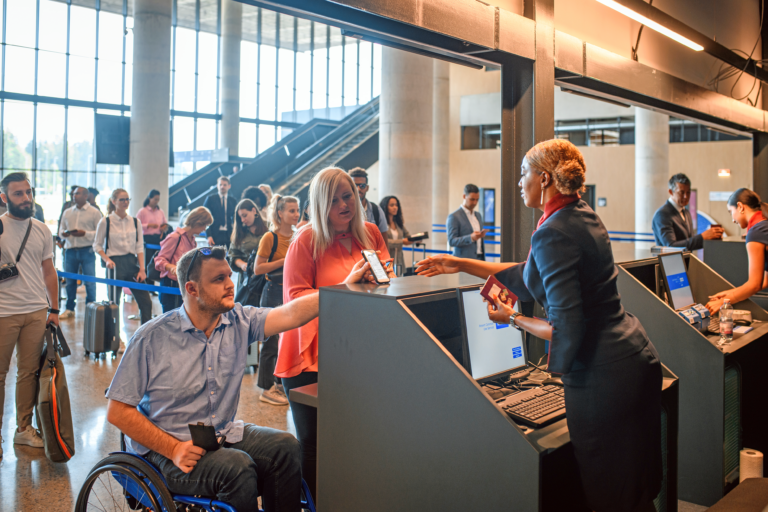
MD ONBOARD and Fit2Fly Join Forces to Transform Aviation Medical Clearance
MD ONBOARD and Fit2Fly Join Forces to Transform Aviation Medical Clearance New York, NY – MD ONBOARD, an industry leader...
Read More
March 14th, 2025 is World Sleep Day. The theme this year is “Sleep is Essential for Health,” which emphasizes the critical role that sleep plays in maintaining overall health and well-being.
As Surendra Sodhi, M.D., Chief Advisor of Aeromedical Services for MD ONBOARD, explains, in aviation, sleep assumes an even more critical connotation as it can impact crew alertness and performance, thereby directly affecting the safety of flight operations. From Colgan Flight 3407 to Air India Express Flight 812, or more recently, Batik Air Flight 6723, lack of sleep, fatigue, and decreased alertness and performance were the alleged accident causes. Therefore, for the aviation community this subject assumes great importance.
There are a variety of sleep disorders ranging from insomnia to narcolepsy, but for aircrew, the problems of circadian dysrhythmia (jet lag) and obstructive sleep apnea are more relevant.
Circadian dysrhythmia refers to issues with the body’s internal clock, leading to misalignment between sleep/wake cycles and the environment, and resulting in jet lag. The internal clock is regulated by a small group of cells called suprachiasmatic nucleus in the hypothalamus (brain). They respond to various cues like light exposure, melatonin, and environmental cues (zeitgebers) like temperature changes, mealtimes, physical activity, social interactions, and genetics. For jet lag to occur, it usually takes rapid travel through three time zones, and the internal clock starts readjusting to the new time zone after a minimum stay of 20-24 hours at the new location.
By implementing these strategies, you can help mitigate the symptoms of jet lag and recover more quickly after traveling across time zones.
To manage jet lag, some of the strategies that can be adopted are:
Obstructive sleep apnea can impact aircrew’s alertness, cognition and performance
Obstructive sleep apnea (OSA) is a condition where sleep is disturbed by the airway blocking the flow of air into the lungs. This leads to a drop of blood oxygen levels, which induces a reflex in the brain that awakens a person enough to start breathing again. If a person frequently wakes up at night, he will feel exhausted and rundown in the morning. Over a prolonged period it can lead to a wide range of symptoms that can have grave consequences.
In aviation, the immediate impact would be on aircrew’s alertness, cognition and performance. The symptoms of OSA are: frequent wakeups during sleep due to pauses in breathing, choking sensation, snoring, fatigue, irritability, difficulty in concentrating or remembering, daytime drowsiness and headaches. OSA can lead to the development of high blood pressure, type 2 diabetes, and heart problems like arrhythmias that can lead to stroke, depression and anxiety.
A good mnemonic to help in evaluating OSA is STOPBANG:
S – Snoring that is loud and disruptive
T – Tiredness, fatigue and excessive daytime sleepiness
O – Observed cessation of breathing by partner/spouse
P – Pressure, high blood pressure
B – BMI higher than 3
A – Age more than 50 years
N – Neck circumference more than 17 inches for men and 16 inches for women
G – Gender, higher incidence in males
A positive response for 3 or more should trigger a medical consult.
Diagnosis of OSA is based on a sleep study (polysomnogram) which can be conducted in a sleep laboratory, or at home with some limitations. During the test, periods of apnea (when breathing completely stops) and periods of hypopnea (when breathing is reduced and you are not taking in enough oxygen) are observed. This gives the clinician Apnea-Hypopnea Index (AHI):
Treatment: Multiple treatment modalities are available for OSA. Continuous Positive Air Pressure (CPAP) breathing while sleeping is the most effective non-invasive treatment available. This treatment gives a constant flow of air to help keep your airway open. But some cannot tolerate it. In such cases some oral appliances are useful. They work by enlarging the air way passage. Surgical Intervention is reserved for patients with anatomic abnormalities and in cases where all other treatment modalities have proved non-effective.
Whenever we talk of healthy lifestyle measures, sleep, along with nutrition and exercise, always figures as an essential factor in maintaining good health. Hence, let us resolve to adopt proper and efficient sleep hygiene measures and “sleep” our way to good physical, mental and emotional health. Sleep Tight, Wake up Bright.
References: